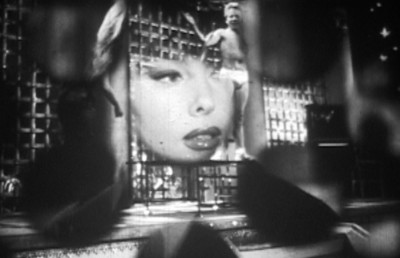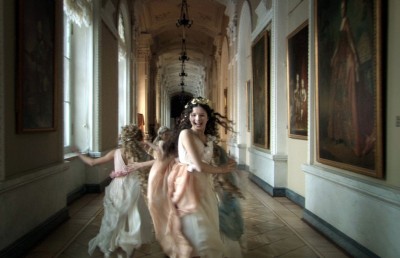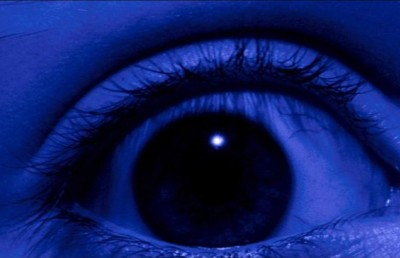Interview with Liu Jiayin
28th Vancouver International Film Festival
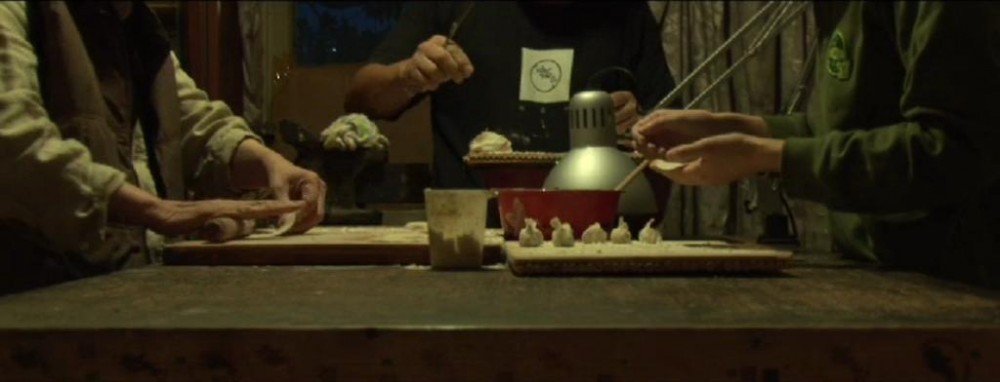
I first encountered the digital film work of Liu Jiayin at the 29th Hong Kong International Film Festival, 2005, where her first feature Niupi (Oxhide) won the Golden DV Prize for the best film in the digital section. At the time she was still a student at the Beijing Film Academy. I wrote the following on Offscreen,
She is arguably the most interesting new Chinese director to emerge since Jia Zhangke. Liu mostly uses the single shot per scene, long take approach employed by many Taiwanese and mainland Chinese film directors, but with crucial differences. The camera is not placed at a far distance from the subject, but is extremely close to the characters and their enclosed, interior environment. More remarkably, Liu adopts a widescreen frame throughout, which, instead of opening up the spaces, makes us aware of how confined they are. Oxhide opens with a slight high angle view of a photograph and part of a printer on a desk. Offscreen, we hear the voices of Liu, herself, talking to her father [Liu Zaiping], who is a leather craftsman. She is explaining how printed advertisements would help his business, and at the end of the shot and the scene, we observe a number of red inked ads being printed. There are only three characters in the piece, the other being Liu’s mother [Jia Huifen], and gradually we learn about their domestic and business-related activities, all of which take place in the home, and all of which are only occasionally glimpsed by the camera. Liu’s restricted view of key narrative action is not dissimilar to the style of the late, great French film director, Robert Bresson, although there is a somewhat “Chineseness” to the perpendicularity of her gaze, while allusions to the equally great (and late) Yasujiro Ozu abound. But, in her quotidian, autobiographical approach and her contrapuntal visual style (simultaneously wide and close) we surely find a singular and profound originality in Liu Jiayin’s work.
Oxhide had already won the FIPRESCI Prize, and the Caligari Award at the International Forum section of the Berlin International Festival, and later the same year, it won the top prize in the prestigious digital competition at the Jeonju International Film Festival, and easily won the Dragons and Tigers Award for Young Cinema to a new director from the Asia-Pacific region at the Vancouver International Film Festival (VIFF). Her new film, Niupi er (Oxhide II) premiered at this year’s Cannes International Film festival, and, for me is the finest new film of the year. Again she worked alone with her parents, but this time she confined the action to a single room, and employed only nine shots in 133 minutes of (apparently) real time. (The first film contained 23 shots, took place in an area of only “50 square metres” of the family home/workspace, and had a running time of 110 minutes.) Part of programmer Shelly Kraicer’s VIFF catalogue copy is as follows:
We begin with her father clearing their living room table; he kneads dough and chops pork; Liu and her mother prepare the fillings, and together they shape the dumplings, boil them, and eat them. The film is constructed in only nine fixed shots, starting at one end of the table and proceeding clockwise in 45 degree increments, until the camera returns ‘home’ at the end.
As I remarked at the end of the first screening at VIFF, Oxhide II is not only a great work of digital film, but is also a great work of engineering.
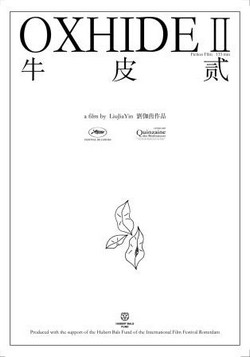
Offscreen: My first question is about style. And, I wonder if you could explain a little bit of why you use the cinemascope frame, because I was very surprised when I saw your first feature film, that for such an intimate setting, and shooting on (not the highest definition) digital, you would use the widest scope frame available.
LJ: Firstly, it is personal. I like the aesthetics of the 2.35:1 aspect ratio, and it also makes the film look more “serious.” I knew that, normally, the cinemascope format is used as a more “epic” style, and for more “spectacular” scenes, or for exterior scenes. I know that my film was really intimate, but I still chose to use this ratio. That’s the first point. Secondly: size and distance are relative, so, even if you are shooting something very close, or if something you are shooting is very small, if you are using a cinemascope lens then that will give you a different perspective, and it will make it look larger.
Offscreen: Thank you. I was curious because there is a different “feel” having that wide screen in a very small space, and, also there are things that occur off screen, so we have the illusion of a great deal of expanse, but, in actual fact, it feels to me that we are being confined to what we see more than we would normally be with a regular frame. We are aware of the fact that we are seeing things, but, we are not seeing other things. I think it is interesting in terms of how specific it is: what we are seeing and what we are not seeing. We never see the whole space. If you can imagine a room; with scope we should see everything. So if you could talk about how you plan what we see and what we don’t see in the frame… perhaps reasons for choosing what we see and what we don’t see.
LJ: In fact, another reason I chose cinemascope is precisely that the audience would actually see fewer things instead of more things. For example, looking at it one way: if the ratio is 16:9 then you will add a little something on both sides with 2.35:1. On the other hand one can use the wider ratio to cut things out at the top and bottom of the frame. So I chose this “cutting” option most of the time.
Offscreen: Thank you; yes, I like this explanation. We mentioned briefly film directors with whom you might be familiar with … But, there are two directors in particular, whose work you might have seen, who are also interesting in the context of what you are doing with the frame. One of these is the French filmmaker, Robert Bresson because he always said there was only one way of shooting a scene. There was a particular framing that he would use … The other director, you are perhaps not familiar with, is the Hungarian Miklos Jancsó, because mostly he would shoot outside on the plains, and in cinemascope. He stages action and movement—his films tend to be political epics, without necessarily much of a story—so, being outside we expect the cinemascope lens to open up the space, but, in the end, that frame is like a trap. So, if you’ve never seen any of these films, I’ll try and get a copy to you… there’s very little dialogue in these films, so sub-titles aren’t necessarily a priority for understanding.
LJ: I am an admirer of Bresson, but I don’t know Jancsó. Thank you for the offer …
Offscreen: I have a question about another filmmaker, and this is in relation to the new film, Oxhide 2: because it is a 360 degree space, I was wondering if this is a kind of a “play” on what the Japanese director, Ozu Yasujiro was doing with his staging. Was knowledge of Ozu’s work part of the reason for choosing to map out 360°? I am wondering if you were alluding to the 360° spatial system in Ozu’s films. It is not important. It is just something that occurred to me.
LJ: Which film?
Offscreen: In all of his films, he worked very differently from the Hollywood convention of the “180 degree rule.” As I’m sure you know, one is not supposed to move the camera across the axis [of sight or movement]. For example if someone is filming the three of us in this room, the camera will always be set up on one side [pointing] say, over there … But what Ozu did in his films, spatially, had to do with the relationships between the characters, and he would just cut around. For example there would be a shot of you, a shot of me… It wouldn’t have anything to do with spatial continuity, but his “system” would be ruled by other things, e.g., the harmony or conflict between the characters, would decide where you put the camera rather than a “continuity system.”
LJ: Bresson is one of my favourite directors. As for Ozu: I like his films, but for their narration rather than their style. When I go back, I’ll have to look at them again, …
Offscreen: Also, I was thinking that with Ozu, invariably, he filmed inside rooms. He doesn’t go outside very much.
So, one of the things I thought was great about your new film, is how carefully you must have planned the acting, the characters’ movements. With your first film, Oxhide, I got the sense of a certain amount of improvisation, but in the second film, everything I think was more careful. So could you talk about the kind of directions you gave your parents for individual shots on what they had to do.
LJ: One of the reasons that there were a few years between the two films is that we had some time to improve this aspect, to do some rehearsals of their acting. And, we actually held a few meetings to talk about it, just the three of us. So, if it weren’t for the time … I think if I’d shot Oxhide 2 right after the first film, I probably wouldn’t have had so much complex acting. My idea is to go back to “life” itself. Oxhide 1 is sometimes a little excessive or extreme, more “concentrated,” but Oxhide 2 is a little more smooth, it’s more like a little diluted, closer to life. We had many, many rehearsals, however mostly about positions, because of the set-up of the camera and less about dialogue.
Offscreen: I noticed, for example, in the last shot, where your father would put a bowl down, … all of you were moving bowls and plates so that sometimes we couldn’t see them eating, and sometimes we could, so, I realized as well how carefully planned were these gestures of placing things …
LJ: Yes, so we did a lot of rehearsals, including making decisions about where to put what; for example for the third scene where we are cutting chives on the table, there are exact places to put everything because if you put it in the wrong place you won’t be able to see certain things that happen afterwards. Even with that, in the final product there are still some places that are somewhat problematic, however, I think that because we are a family, we have a natural chemistry. So, we were able to overcome these problems, and, it turned out alright afterwards.
Offscreen: So, in that third scene, a lot of us in the theatre found that very funny. It was like the comedy scene, and, I was struck by the difference between this film and the first film, because in the first film there was a lot of conflict between yourself and your parents, but, here, they were so unbelievably restrained in not complaining about what you were doing.
LJ: That’s why I hope that Oxhide 2 will seem smoother. I don’t want you to see the same conflict and the rawness of the first film. After a lot of discussions, I felt that my mum’s acting was good. She was natural. However, I feel that my father’s performance in Oxhide 2 could sometimes be a little extreme, a little excessive, so I wanted him to control himself a little bit in order to be less “extreme.” As for me, I feel that my acting was the worst of all. And, I knew that, which is why I didn’t put myself on camera in the first film, but I did show myself a little more in the second film. This is something that I think we have to try to solve: the problem of my performance as an actor. However, after many discussions, we haven’t been able to find a way to improve it.
Offscreen: It is not a problem, because you come across as being very serious, and sometimes too serious, and, therefore it is funny, because you are “so serious.” So, I don’t think you need to worry.
LJ: When my father saw Oxhide 2, he commented that before I appeared on the screen everything looked fine, but, then I lower the “class” …
Offscreen: Yes, that’s funny.
So, whereas in the first film, there’s a lot of off screen action and off screen sound, something that struck me about Oxhide 2 is that, sometimes, there is so much going on, for example the 3rd scene, that we can’t see everything, unless we work … So, that if someone says this film is “boring”, I would say no, it isn’t, because there is so much happening. So, I’m curious about how much time was taken to make it. Was there a series of making dumplings over a period of time? Sometimes there is more action going on than we think is possible in “real time.”
LJ: I feel that in family life, it is just like that, because, it is not like the concentration of this interview. In family life there is always a lot going on at the same time, and things don’t have a start to them and an ending, so we should have a multi-layered narration and multi-layered themes to it.
There are only nine shots in the film, and for three or four of the nine shots, we only needed one take. The rest of the shots we took three or four times. We had enough flour for all of the takes.
Offscreen: I’m curious because, in introducing the film Shelly Kraicer told us that we would learn how to make dumplings, but, sometimes there are deliberate attempts to not have us fully understand. For example when the dumplings are being filled, we are looking directly at making the dumplings, and then, when we move to 45° we then see the dumplings from the side [I draw them]
LJ: I think it is possible that it is just a different angle.
Offscreen: Exactly yes! But, initially, I didn’t know what the dumplings actually looked like. Also, when your mother is going through the chives, she has a very small amount, but, later, it looks like there is a lot more. Anyway, this is what made me think that we weren’t watching the process of making one set of dumplings from start to finish …
LJ: It is hard for me to remember exactly. We tried to shoot everything in strict continuity. The dumplings that are being boiled in the 8th shot and the ones we are eating in the 9th shot, are exactly the same. And they didn’t taste good at all.
Offscreen: Here is a “social” question. Maybe I learned something here. How can you make 73 dumplings from just a small piece of meat, and then a small piece of fat. So, I was thinking, you are making so much use of so little food. It seems that Chinese people are able to be very careful about how much food there is. They are able to make a lot out of a little. That is one thing. The other thing is that you are boiling the dumplings in water, and then you drink the water as soup. So, you are using everything. So I was thinking that, maybe, even poor people can eat well with very little. That was the “social” message I got from that. But, I’m also wondering was it really just this small piece of meat that you used for 73 dumplings?
LJ: There are two ways to make dumplings. You can use meat as the main ingredient. In this case we were making chive dumplings with just a little bit of meat. I think that your version [interpretation] is quite right, because in the past, when there weren’t so many resources and when people used to make dumplings, they would add more vegetables than meat, especially when there was a large family. So you would usually end up with a vegetable dumpling with just a little bit of meat, because of hard times.
Offscreen: Thank you. So the other two things that struck me about the film socially, are, firstly, how important food is in China and Chinese culture, and the second thing, …, and this is more of a question: Are you using your family unit as a microcosm of socialist society, or community? Something I like about China is that there is a kind of “natural” socialism; people help one another. So, I see your expression of your family life as being perhaps a microcosm of society in general.
LJ: No. [laughter] It is hard for me to put something like this in my story.
Offscreen: So that’s my incorrect interpretation, then.
LJ: We drink the soup because it is drinkable and it’s tasty, but, there is a Chinese proverb …, it’s kind of like coming full circle. There is everything in there, you cook the food in the water and then you drink that which kind of “completes the process” with this gesture.
Offscreen: Which fits in with the “circularity” of the film as well.
LJ: There is a beginning and an end, which are connected.
Offscreen: Great. To go back to style a little bit, and this ties in with the amount of planning that goes into your directing your actors. The shots have different positions and angles from one another. Near the end, I guess shots 7 and 8: Shot 7 is of faces only, where you have a high position, and then you have to get down onto the floor for shot 8. And, your mother says, “oh the cat bit me,” which I’m sure didn’t happen, which is a way of getting down onto the floor. I like that extreme shift, where we don’t see the table at all in those two shots. So I wonder if you could talk about this part of the film. You must have been scared about what the audience might think of those decisions. It is surely a challenge for the audience who have been looking at the table and the making of the dumplings to suddenly not see it at all in those two shots. We suddenly go to the highest position of the film, looking at heads, to the lowest position. It also must have been difficult for your mother to remember that, after a long time, she needs to pretend that she has been bitten by the cat, and, also for your father to get down on the floor like that, to cook. What was behind those choices? And, would you normally cook on the floor, or was the choice of cooking on the floor just a way of getting from up there to down there?
LJ: First of all, that wasn’t really a table. It was a workbench, which is taller than a regular table. Preparing everything on that, and putting the boiler on the workbench, it would actually be difficult to cook on there. It is actually not very easy to operate this kind of stove, especially at a height where you have to put the food in and stir it. So, we actually do cook on the floor. It also has to do with what happened to our home. For quite a while the natural gas stove in our kitchen was broken, so we had to cook on the table. So the audience would think maybe we don’t have a kitchen, which is not true. So, for a while we had to prepare food on the table and we had a little portable gas cylinder, which we used. In this case it would be difficult to justify doing everything, and cooking on the table. But, this actually happened to us.
Offscreen: In fact that happened to me once when I lived in the Caribbean—I lived there for four years—and there was an oil crisis, and we had no electricity and no oil, so we had to cook like that on the ground also.
LJ: In Oxhide 2, we can see that in the first part of the film, everything is quite smooth. As you know, we moved the camera 45° after each take. But, towards the end, in order to tell the story properly, we went to different angles, for example the head and shoulders shot (7), and then shot 8, on the floor. In fact, I was quite excited by the prospect of making these big changes. When I came up with the idea, I didn’t take into consideration that the audience might find it visually challenging. However, I feel that in other shots we can focus on the movement of the hands and other things on the table. But, for the 7th shot I wanted to focus on the dialogue, and the faces. Because of the story, and because we have dialogue at this point, I chose to focus on the face. After I made Oxhide 1, I always wanted to add one shot with the three of us, all facing the camera, so before making Oxhide 2, I had in my mind a picture of this particular shot, and I was finally able to do this in the 7th shot.
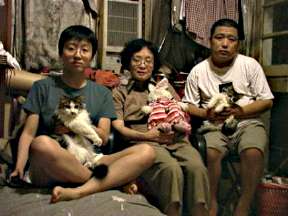
Unfortunately, we only had an hour for the interview. Liu Jiayin was very much in demand, and I wasn’t able to continue the interview at a later date. In fact, I had a couple of key questions remaining, one of which David Bordwell was able to ask Ms Liu before she left Vancouver. I was aware that she now teaches script writing at the Beijing Film Academy, and I was curious about what her script for Oxhide 2 might look like, fantasizing that it could be full of engineering style drawings. Apparently, though, it only contains writing! During the Q & A following the screening, Liu Jiayin explained that there was only one microphone, which was suspended above the table/workbench in the exact same place for every one of the nine shots. Knowing that the sound was thus, uniformly “direct,” I wanted to ask if she made any lighting changes from shot to shot. Hopefully I will have another opportunity to talk to her again, …
For more perceptive discussion of Oxhide II, see David Bordwell’s blog, “Observations on Film Art” and Shelly Kraicer’s monthly report.



